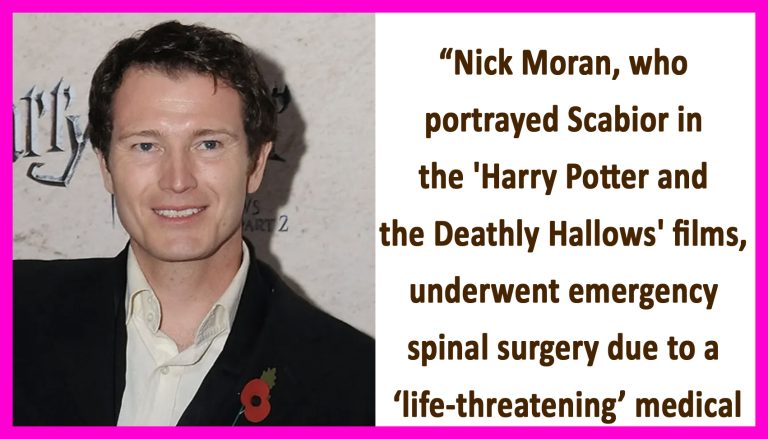Getting Turned On by Communication – Yes, It’s a Thing
Introduction
When we think about what turns us on, most people imagine physical stimuli: the touch of a lover’s hand, the heat of skin against skin, or the warmth of breath on the neck. But for many, sexual arousal is more than just a physical response—it can be sparked through emotional intimacy, intellectual connection, and yes, even communication. We often hear about the importance of “talking dirty” in the bedroom, but the true power of communication in sexual attraction goes far beyond crude phrases or suggestive comments. It’s a nuanced, complex dynamic that involves not just verbal interaction, but also emotional, psychological, and even nonverbal exchanges that create an electrifying connection between partners.
This article explores how communication can be a major turn-on, offering insights into the science behind it, how it plays a role in building sexual attraction, and why it’s a crucial aspect of modern relationships. Communication—when done right—has the power to heighten intimacy, amplify attraction, and even deepen pleasure.
1. The Science Behind Communication as a Turn-On
The idea that words and dialogue can have a direct impact on sexual arousal might seem counterintuitive to some. After all, we live in a culture that often prioritizes physical touch over verbal interaction in the realm of intimacy. However, research shows that communication, especially verbal communication, can be a powerful aphrodisiac. The brain is wired to respond to language in ways that go beyond simple information exchange.
Sexual arousal is rooted in the brain, where physical sensations and emotions meet. Neurotransmitters like dopamine and oxytocin are released in response to various stimuli. But it’s not just touch that triggers these releases—certain words, phrases, and conversations can also stimulate the release of these “feel-good” chemicals. According to Dr. Laura Berman, a clinical sexologist, verbal communication can influence arousal by promoting trust, intimacy, and connection. When a person feels emotionally safe and understood, they are more likely to feel aroused.
Furthermore, when we communicate in a sexual context, we engage in the “mirroring” process, where partners unconsciously reflect each other’s body language and emotional cues. This mirroring can enhance attraction by creating a sense of synchrony and connection. The more we understand and articulate our desires, the more we create an environment where arousal can flourish.
2. Verbal Communication: Talking About Sex
When we think about sexual communication, the first thing that often comes to mind is talking about desires, preferences, and boundaries. Explicit conversations about what turns us on or off can make a world of difference in cultivating a satisfying sexual experience. But what happens when the conversation goes beyond just the basics of “what do you like”?
For many people, getting turned on by communication involves sharing intimate thoughts, fantasies, and emotions that are often kept private. These deeper conversations create an atmosphere of vulnerability, trust, and emotional connection. When someone shares a sexual desire or fantasy, they are not just expressing a preference—they are opening up a part of themselves that requires trust. This openness fosters intimacy, which can lead to sexual arousal.
For example, discussing fantasies with a partner may seem intimidating at first, but when done with care and mutual respect, these discussions can trigger excitement and curiosity. Imagining scenarios together, whether they’re realistic or playful, allows partners to enter a shared space of sexual possibility, creating anticipation and building sexual tension. In this context, communication acts as a turn-on by creating an emotional landscape that enhances physical attraction.
3. The Power of Compliments and Positive Affirmation
While discussing sex is essential, not all communication that turns us on has to be sexual in nature. Compliments and verbal affirmations can also trigger arousal, even when they are not explicitly linked to sex. The act of being seen, valued, and appreciated by a partner can be an aphrodisiac in itself. Compliments related to appearance, intelligence, or personality can trigger the release of dopamine and oxytocin, hormones that are deeply linked to pleasure and attraction.
In the context of sexual relationships, complimenting a partner’s sexual abilities or expressing admiration for their body can be particularly potent. These kinds of affirmations show appreciation, not just for the physical aspects of a person, but for the connection you share with them. Research has shown that when we feel validated by a partner, we feel more secure and open to intimacy. This can lead to heightened sexual arousal because the emotional connection between partners creates a fertile ground for physical attraction.
4. Nonverbal Communication: Beyond Words
While verbal communication plays a major role in arousal, nonverbal communication—body language, eye contact, facial expressions—can be just as important. In fact, much of the communication we engage in during intimate moments is nonverbal. The body can speak volumes, often more than words can express. In the context of sexual attraction, the way a partner touches, looks at, or positions themselves can have a profound impact on arousal.
For example, eye contact can be incredibly intimate. In many cultures, sustained eye contact conveys trust and connection. In a sexual context, prolonged eye contact can create a sense of vulnerability and closeness, which in turn enhances arousal. Similarly, subtle touches, such as brushing a partner’s arm or lightly grazing their back, can send powerful signals that heighten sexual tension without a single word being spoken.
In intimate relationships, being attuned to your partner’s nonverbal cues is key to building sexual attraction. These cues may indicate what a person wants, needs, or desires, and can help guide the sexual experience in a way that deepens connection and pleasure. For example, someone might use nonverbal communication to signal when they want to slow down, speed up, or try something new. This intuitive exchange between partners can be highly stimulating, enhancing sexual arousal.
5. Flirting and Playful Banter: Building Anticipation
Flirting and playful banter are forms of communication that have long been associated with sexual attraction. Playful teasing, witty remarks, and lighthearted exchanges can build anticipation and create an exciting tension between partners. In fact, studies suggest that the anticipation of sexual experiences is often more arousing than the act itself.
Playful banter taps into the power of teasing—an ancient form of courtship that signals interest while maintaining an element of mystery. When partners engage in lighthearted back-and-forths, they create a sense of fun and intrigue that makes the sexual dynamic more enticing. The anticipation of what might come next, combined with the emotional connection fostered through playful communication, can ignite arousal in ways that pure physical contact might not.
Flirting doesn’t have to be overt or aggressive—it can be as subtle as a shared look, a well-timed joke, or a playful comment about something that’s happening in the moment. It’s this form of verbal interaction that allows the sexual tension to build, setting the stage for deeper connection and intimacy.
6. Deep Conversations: Intellectual Arousal
For some people, the mere act of having a deep, intellectual conversation with a partner can be incredibly sexually stimulating. Intellectual arousal happens when partners connect on an emotional or intellectual level—talking about subjects such as philosophy, literature, art, or even shared experiences. Engaging in meaningful conversation that taps into a person’s passions or stimulates their mind can create a profound sense of attraction.
The act of communicating on a deeper level fosters emotional intimacy, which can be a huge turn-on. For those who value emotional connection as a precursor to sexual attraction, a conversation about personal experiences, dreams, or life goals can set the stage for sexual desire. This intellectual connection can lead to a stronger bond and a heightened sense of arousal when the physical interaction eventually follows.
7. The Role of Technology in Communication and Arousal
In the digital age, communication extends beyond face-to-face interactions. Technology—particularly texting, sexting, and social media—has created new avenues for sexual communication. Many people find that texting or engaging in sexting with a partner can be an incredibly powerful form of sexual communication, allowing them to explore desires, fantasies, and attraction without the pressure of face-to-face interaction.
Sexting, in particular, is an intimate act of communication that allows partners to express their desires and turn each other on through words alone. The anonymity and physical distance can allow individuals to be more vulnerable and open about their sexual desires, leading to heightened arousal.
Technology has also expanded the concept of communication by creating virtual spaces where partners can connect intimately. Video calls, online chat rooms, and social media allow individuals to engage in real-time communication, bridging the physical gap and creating new forms of sexual arousal.
Conclusion: The Power of Communication in Sexual Connection
Getting turned on by communication is not just about talking dirty or expressing sexual desires in provocative ways. It’s about creating a connection—an emotional, intellectual, and physical bond—through the exchange of words, gestures, and shared experiences. Communication in its many forms—verbal, nonverbal, intellectual, and technological—plays a central role in building sexual attraction, heightening arousal, and fostering intimacy.
Whether it’s through deep conversations that stimulate the mind, playful banter that builds anticipation, or expressing vulnerability through verbal affirmations, communication has the power to enhance sexual experiences in profound ways. The key to turning on communication is not just about what is said, but how it is said, when it is said, and the emotional connection it fosters. By exploring new ways to communicate, partners can deepen their connection and experience a more fulfilling, dynamic, and intimate sexual relationship.





